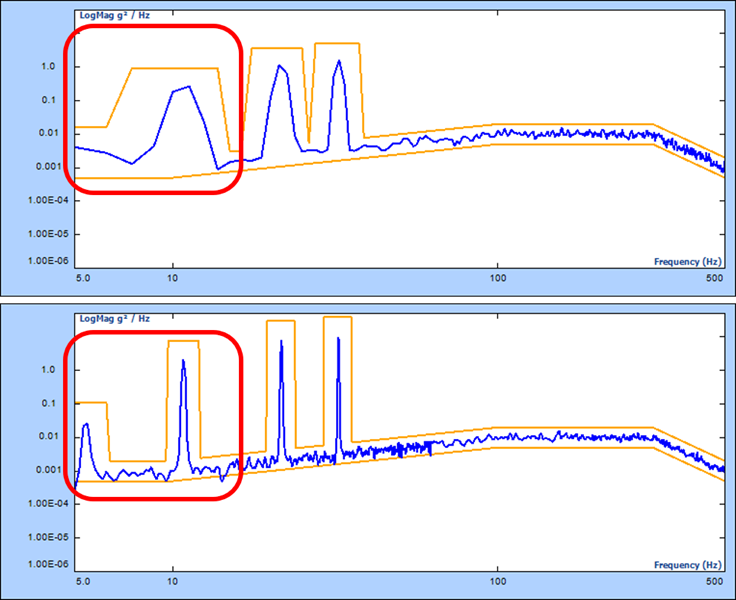Center of operation and monitoring of 12 or more shaker systems with API
Manufacturing plants often require controlled vibrations on various parts of the plant to run for several hours, days, or even weeks at a time. In some cases, continuous operation is required.
At these facilities, the affordable down time is limited to a few hours in a week. The continuous controlling and monitoring of independently running systems is another significant challenge. Monitoring each controller on a separate PC would require an unreasonable number of PCs to monitor. The necessity to run different types of controlled vibrations on these machines makes it impossible to use MIMO (Multi-Input Multi-Output) control. Also, when used with a single PC with MIMO control, memory and computational resources of the PC would become unreasonably high when the number of shakers needed to be controlled grows larger than 10.
Read More
Multi-Resolution Overview Video
Watch Darren Fraser’s Multi-Resolution Overview presentation from this year’s ESTECH 2021 conference. Viewers will receive a brief review followed by several practical application examples. The Multi-Resolution function is patented by Crystal Instruments.
Read More
MIMO Vibration Control vs. Single Shaker Vibration Control
With the development of multiple shaker table systems, the availability of Multiple Input Multiple Output (MIMO) controllers and Multiple Input Multiple Output (MIMO) vibration control started emerging a couple of decades ago. Due to the readiness of standards, (e.g., Mil STD 810G, Method 527 and IEST DTE 022 working group recommendation) MIMO Testing has gained a huge momentum in the past decade. The increased usage of multiple shaker testing systems has been adopted by not only our military and defense industries, but also NASA, automotive, and many other commercial industries as well.
Read More
Comparison of Multi-Resolution Spectrum Technology and Regular FFT in Modal Analysis
Modal testing and analysis are crucial processes in the product development cycle. Sometimes the testing results are wrong by several magnitudes, especially in the low frequency bands where the frequency resolution is not sufficient. Crystal Instruments’ patented Multi-Resolution (MR) Spectrum technology helps overcome this issue with a unique solution. A modal test is carried out to examine data obtained through regular FFT technology and MR technology to quantify the modal results, such as damping, FRF amplitude, Auto-MAC chart, and mode shapes.
Read More
Multiple Shaker Table Systems
There are many different shaker table arrangements based on various types of MIMO testing applications. The Multiple Shaker Table System ranges from Multiple Exciter Single Axis (MESA) to Multiple Exciter Multiple Axis (MEMA) with 2 to 6 shakers involved (e.g., three axis translational shaker table, four-poster, 6 DOF Multi Axis Shaker Table (MAST), etc.)
Read More
Output Ground Isolator
The output ground isolator is the most user-friendly solution for controlling multiple shakers while simultaneously improving accuracy of control and ensuring safe operation.
Read More
Multi-Resolution Spectrum Analysis and Sine-on-Random Testing
In this blog post, we will discuss the benefits of using Multi-Resolution, a feature available in Vibration Control Systems, to offer a better frequency resolution in the lower frequencies of the Sine-on-Random vibration spectrum. The same benefits are also applied to the general Random test, and Random-on-Random mixed mode test.
Read More
Smart Battery Pack Testing with EDM
A battery pack has an enclosure to protect battery cells from external hazards, such as external forces and moisture. An internal cooling system and Battery Management System (BMS) provides a protected environment for the cells to perform in.
While performing vibration or THV (temperature/humidity/vibration) tests on a battery pack, accelerometers, temperature, and humidity sensors can measure the external environment of the battery pack. The BMS monitors the status of internal battery pack and communicates with external components via CAN bus.
Read More
Vibration Testing Fully Connected Cars
Vibration testing of automotive components helps manufacturers ensure both a sound design and improved reliability. The current growing demand for electric vehicles has placed battery testing into the spotlight and as a result, attention for vibration tests of electric vehicle batteries has increased.
Read More
Swept Sine Test Measurement Strategy
A Swept Sine test is a type of vibration test where the controller excites one specific frequency via sinusoidal voltage drive. As opposed to a Random test, where a broadband of frequencies is excited together like white noise, the Swept Sine test produces a response with energy in the primary frequency and its harmonics (i.e., frequencies that are multiples of the primary frequency).
Read More











